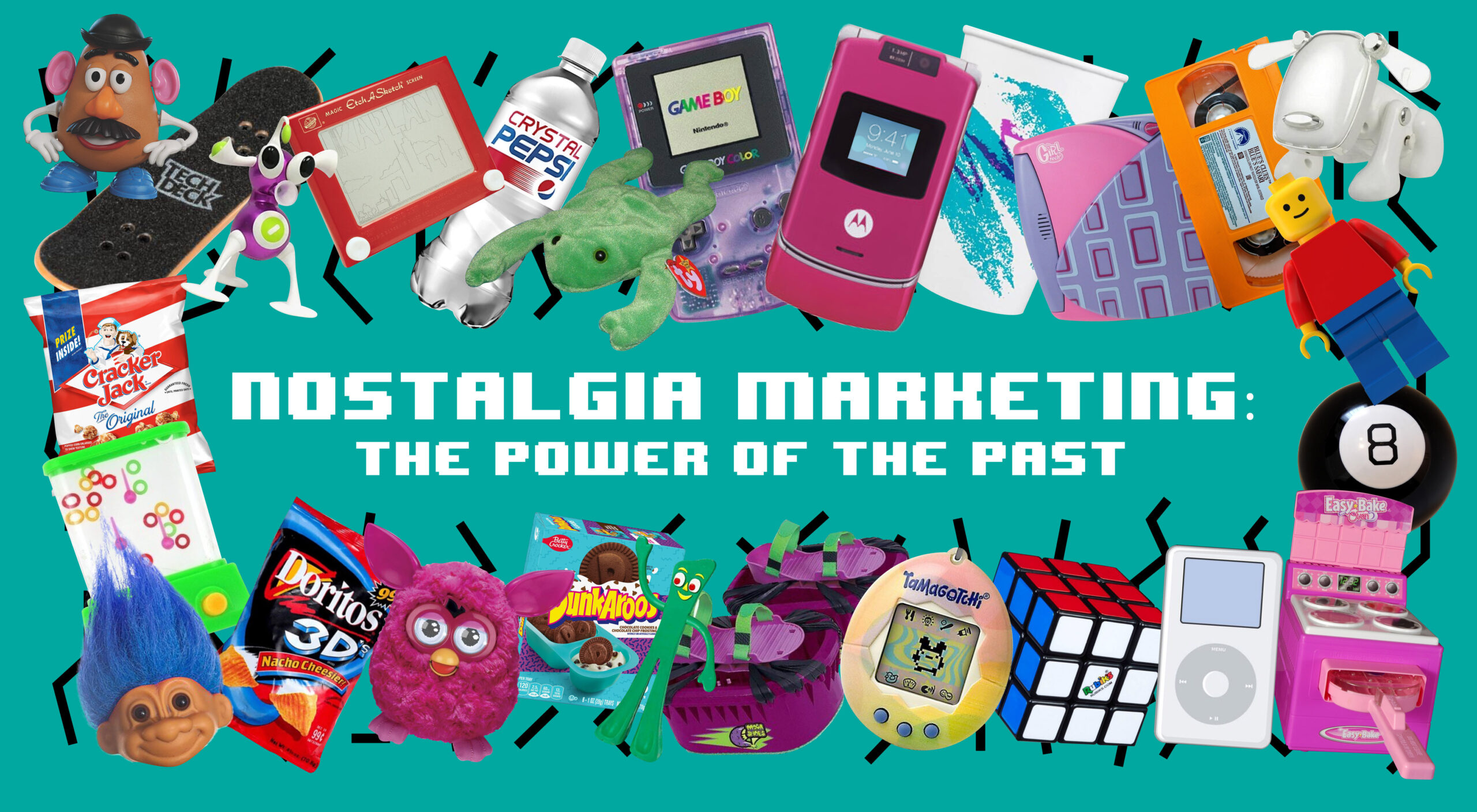A Stranger Things episode features 80s synths and Spielberg-inspired spectacles. An ad for Microsoft’s Internet Explorer includes images of fanny packs and Troll Dolls. To the delight of many, Pepsi reissues its Crystal Pepsi flavor from the 90s. What do these things all have in common?
They’re all examples of nostalgia marketing, or, as AdRoll puts it, the “strategy of tapping into positive, familiar concepts from previous decades to build trust for new ideas and reinvigorate modern campaigns.”
Read on to learn about the power of nostalgia marketing and how you can use it for your own campaigns!
Why It Works
Nostalgia is a powerful emotion. If you listen to a song from your childhood, you will likely feel positive emotions from the memory of listening to it way back when. This is the effect of nostalgia on your brain, the mechanics of which have been studied by countless researchers. Overall, studies have found that remembering the past is associated with feelings of happiness, comfort, and social belonging. Researchers at Tilburg University in the Netherlands even reported that listening to nostalgic music on a cold day made people feel physically warmer.
So, why now? The pandemic and other stressful global events have created a larger demand for comforting, familiar content. You can see this in action with the recent success of shows such as Ted Lasso, which hearkens back to older television tropes, as well as direct reboots like Gossip Girl and Night Court. Since images from the past come with a built-in positive reaction, content creators are finding creative ways to leverage this emotion and help audience members feel included in their brand’s story — and the public response to this practice has been ultimately warm.
How To Make It Work For You
Start the same way you would with any marketing plan: identify your target audience. This will influence what (and when) you pull your inspiration from. For example, Gen Z has nostalgia for different trends, products, and aesthetics than Gen X. If your audience skews younger, pulling from the 2000s or the late 90s may help you to connect with them specifically. Research the decade you want to focus on before making anything concrete, and take a look at successful campaigns for inspiration. The more specific you can get with details, the more likely it is that your content will elicit the right emotion.
If you don’t know where to start, using your company’s past is a natural place to begin. For brands with a long history, taking inspiration from classic products or advertising designs can recapture the attention of past customers while informing new customers of your legacy.
But what if your brand is relatively new? Don’t worry, you can still find ways to connect your brand with nostalgia by becoming familiar with the history of your industry and using relevant retro elements in your marketing content.
Know The Risks
While you may be excited, be sure to tread carefully. Nostalgia marketing is based on emotion, and inauthenticity will put off potential customers — and, at worst, make them feel betrayed. Minimize your chances of inauthenticity by making sure not to skimp on the research. You don’t have to have personally experienced the decade you’re referencing to pull this tactic off, but it does help. For a more thorough investigation, try talking to someone who belongs to your target age range about the past. What do they remember? What kinds of images evoke nostalgia for them? How do they feel about your content ideas?
Another thing to avoid is forcing the connection between the object of your nostalgia and your brand. For example, a video game company using a retro 8-bit style for a graphic may draw the attention of older customers who remember playing games in the arcade. Using that same 8-bit style in an ad for a hair salon may ring false — but a short video featuring new takes on 80s hairstyles could be a perfect fit.
Nostalgic intellectual property also tends to be heavily copyrighted, so always check the laws on the references you’re using. Let’s go back to the example of that video game company. Putting Ryu and Ken in an ad without permission would be a no-go, but using a style broadly inspired by games like Street Fighter gets the same message across without copyright infringement. Get creative and tap into your own past, and you may find a better connection with your audience is in your future!
Ready to grow your business and increase your sales with creative marketing tactics? Get started with Big Deal Marketing today by clicking here.


0 Comments